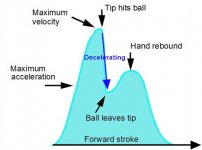"The push" she describes is simply where you stop letting gravity move the cue and start involving your arm. Nothing that defines "push" differently from a normal stroke.
pj
chgo
Yeah that's what a push is. I didn't say she defined it but I think most folks understand what it is. I liked the fact that she gave it a place along the course of the stroke even if its a simple and "not here" but "here" with the visual its great additional instruction. Since a lot of people don't use the widely taught SPF stroke this gives them some additional information to grab onto in order to properly stroke without muscles getting in the way and interfering with a straight stroke.
![CropperCapture[140].jpg CropperCapture[140].jpg](https://forums.azbilliards.com/data/attachments/414/414974-862a9b453b9d98966c4c402cc2431164.jpg)
